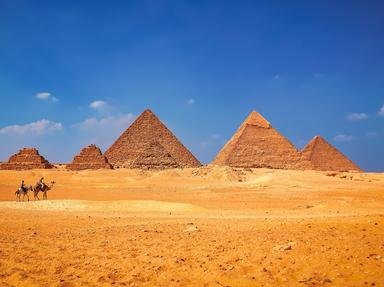Quiz Answer Key and Fun Facts
1. Ancient Egypt's most famous female figure is most likely Cleopatra. What of these is her actual (formal) name?
2. Jumping back a few Dynasties, we come back to the time of Tutankhamun. Who was his wife?
3. A spectacular bust of Queen Nefertiti can be found in a museum in Berlin. But what does the name "Nefertiti" mean?
4. Nefertari - not to be confused with Nefertiti! - was a favourite wife of which great Egyptian Pharaoh?
5. Hatshepsut, the female Pharaoh of the 18th Dynasty, used a story stating that she was the daughter of Amun-Ra in order to legitimise her position as Pharaoh.
6. Hatshepsut was not the only female Pharaoh and was certainly not the first! Which of these women was the first female Pharaoh of Egypt?
7. Great women of Egypt include more than just princesses, queens and even Pharaohs. Lady Peseshet was none of these. What is she famous for being?
8. The queen Nitocris was head of the civil service during the 6th Dynasty.
9. Lady Nebet of the Old Kingdom held which illustrious position within Egyptian society?
10. Although not strictly an Egyptian woman, the goddess Seshat was the goddess of which of these?
Source: Author
DigitalAngel
This quiz was reviewed by FunTrivia editor
bloomsby before going online.
Any errors found in FunTrivia content are routinely corrected through our feedback system.


